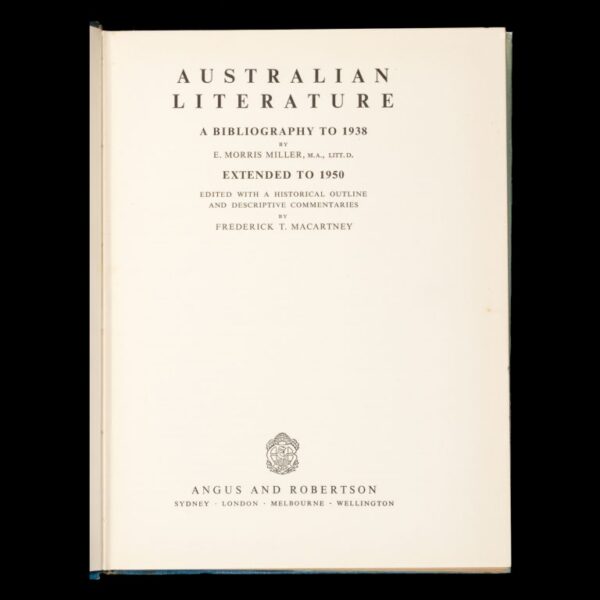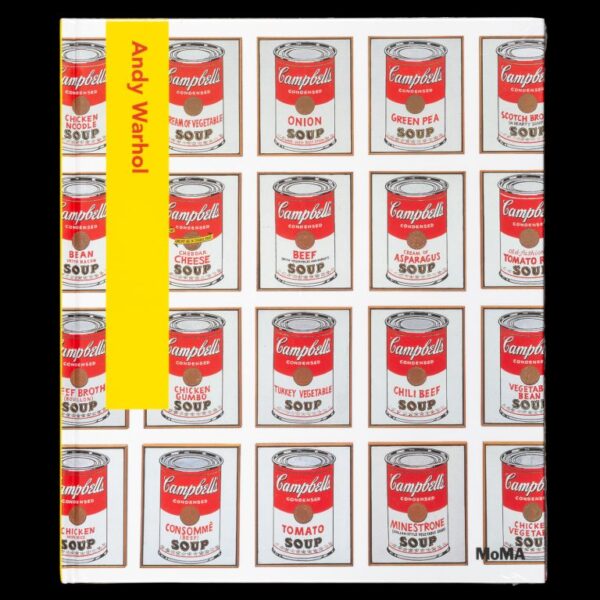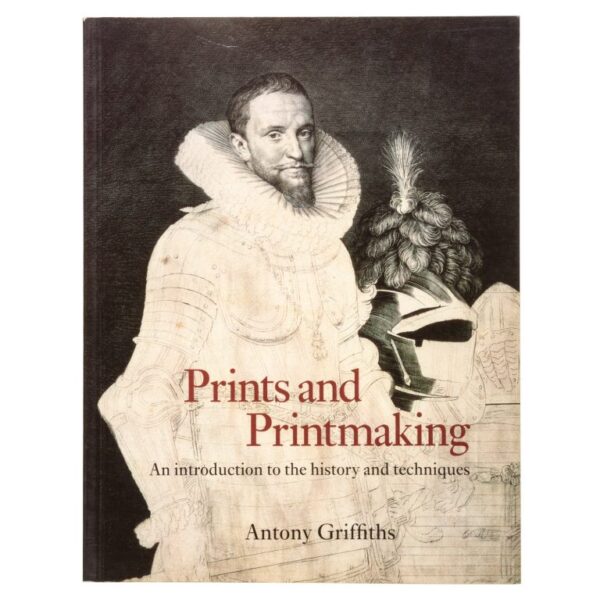
ALISON, Sir Archibald
from the Commencement of the French Revolution in M.DCC.LXXXIX. to the Restoration of the Bourbons in MDCCC.XV. Edinburgh and London : William Blackwood and Sons, 1853 - 1855. Ninth edition. Twelve volumes octavo (lacking the oblong quarto atlas), bound in uniform half calf, spine in compartments with raised bands and gilt ornamentation, contrasting morocco title labels ruled in gilt, a few scuffs, marbled edges, pagination various, engraved frontispieces. A very good set of Alison's monumental study of the French Revolution, written to quell any thoughts that such an event could take place in Great Britain. This set lacks the final atlas volume.

London : THos. Agnew and Sons, 2001. Quarto, illustrated wrappers, unpaginated (approx 100 pp.) illustrated. Fine paintings by Sidney Nolan, Emily Kame Kngwarreye, Rosalie Gascoigne, Russell Drysdale, Albert Tucker, Fred Williams, William Robinson, Ray Crooke, William Dobell et al.

Sydney : The Beagle Press, 2008 (2010 reprint). Quarto, boards in dustjacket, pp. 216, illustrated. 'A new book on Melbourne artist Rick Amor. A master draughtsman, printmaker and sculptor. His paintings are full of drama, deep melancholy and foreboding, yet their subject matter is, more often than not, the mundane and everyday places of suburbia and the drab underside of the city. Written by Gavin Fry, the text details the evolution of the artist's work in a clear and perceptive manner, focusing on important developments and particular works. The book contains more than 160 colour plates, black and white illustrations, photographs documenting the artist's life, biographical notes, exhibition lists and a selected bibliography.' - the publisher

London : Phaidon, 2004. Quarto, boards in dustjacket (light wave), pp. 320, extensively illustrated. A very good copy. 'While the history of photography is a well-established canon, much less critical attention has been directed at the phenomenon of the photobook, which for many photographers is perhaps the most significant vehicle for the display of their work and the communication of their vision to a mass audience. In the first of two volumes, both co-edited by Martin Parr and Gerry Badger,The Photobookprovides a comprehensive overview of the development of the photobook: from its inception at the dawn of photography in the early nineteenth century through to the radical Japanese photobooks of the 1960s and 70s, by way of the Modernist and propaganda books of the 1930s and 40s. The selection of photographers compiled by Badger and Parr challenges the popular canon, and their survey of the history of the photobook reveals a secret web of influence and inter-relationships between photographers and photographic movements around the world. The book is divided into a series of thematic and broadly chronological chapters; each features a general introductory text that offers background information and highlights the dominant political and artistic influences on the photobook in the relevant period, followed by more detailed discussion of the individual photobooks. The chapter texts are followed by spreads and images from over 200 books, which provide the central means of telling the history of the photobook. Assimilated diligently by Parr and Badger, these illustrations show around 200 of the most artistically and culturally important photobooks featuring the cover or jacket and a selection of spreads.' - the publisher

Melbourne : NGV, 1997. Quarto, illustrated wrappers, pp. 72, illustrated. A very good copy. Includes artworks by Violet Teague, Margaret Preston, Ethel Powers, Helen Ogilvie, Geraldine Rede, Lionel Lindsay, Thea Proctor, Sybil Craig, Noel Counihan, Eric Thake, Bea Maddock, Dorrit Black and others.

London : John Chapman, 1856 [and] London : John Murray, 1860. Five volumes, octavo, uniformly bound in quarter calf over marbled boards (rubbed), spines in compartments with raised bands, gilt tooling, contrasting morocco title labels lettered in gilt, marbled edges and endpapers, pagination various, occasional light foxing, a few maps and engravings. A complete set in three volumes of Motley's great work on Dutch history, The Rise of the Dutch Republic, together with the first two volumes (of four) of his continuation History of the United Netherlands.

London : Longmans, Green and Co., 1875. Eight volumes, octavo, presentation bindings of full tree calf, upper boards ruled in gilt with armorial crests of Presbyterian Ladies' College, Melbourne, spines in compartments with raised bands, ruled in gilt with gilt ornamentation, contrasting morocco title labels ruled in gilt, marbled edges and endpapers, prize label to upper pastedown of first volume to Miss Burkett in 1882, with a later handwritten note from a relative noting that Miss Burkett went on to be a teacher at the College, pagination various, split to the spine of first volume and upper board of the eighth volume with a long split and nearly detached, otherwise an attractive decorative set.

Sydney : State Library of New South Wales, 2014. Quarto, illustrated limp boards, light handling marks, pp. 256, illustrated. A fine copy. A sense of awe swept through natural history circles in 18th-century London when the first ships returned from Sydney with their cargo of exotic animals, birds, and plants?and striking watercolor illustrations. The sudden emergence, in 2011, of a large number of these watercolor illustrations has revealed much about the early years of the colony. In Natural Curiosity, Louise Anemaat uncovers never-before-published works from the artists of the First Fleet, including convicts-turned-watercolorists Thomas Watling and John Doody, and the anonymous ?Port Jackson Painter.? She unravels the complex network of natural history collectors who spanned the globe eagerly acquiring, copying, and exchanging these artworks, from New South Wales Surgeon-General John White to passionate British collector Aylmer Bourke Lambert.

With a commentary on the life and work of Johannes Gutenberg, the printing of the Bible, the distinctive features of the Göttingen copy, the "Göttingen Model Book" and the "Helmasperger Notarial Instrument". Cologne : Taschen, 2018. Two volumes, quarto, with accompanying booklet, in publisher's card box. Facsimile of the Gutenberg Bible. Light marks to the card box, else a fine copy, near mint, of this out of print and valuable reference. The printing press has been called the greatest invention of the second millennium. Published in Mainz around 1454, the Gutenberg Bible was the first major Western publication to be printed with movable metal type, ushering in a whole new age of knowledge distribution through mass-produced books. Before Gutenberg, woodcut printing and early forms of movable type printing had been mastered in Asia, but had yet to reach Europe. Instead, each book had to be copied by hand in a long, labor-intensive process. Not only did Gutenberg?s innovation of mechanical movable type significantly speed up production without sacrificing quality, it irreversibly enriched public knowledge, pioneering mass communication and allowing people to access ideas and participate in discussions like never before. When it comes to radical revolutions in media, the Gutenberg Bible is up there with the Internet. This facsimile edition derives from one of the very few surviving complete vellum Latin originals worldwide; the Göttingen Library edition, one of the most valuable books in the world, listed in the UNESCO Memory of the World program. All 1,282 pages of this artistic and technological masterwork are included, along with a companion book written by Stephan Füssel, Gutenberg-Chair at Mainz University, introducing Gutenberg, his transformative influence, and two important documents of the time: the Göttingen Model Book which was used to illuminate the Göttingen Library edition and the only surviving notary document by Ulrich Helmasperger, which records the history of this unique invention and its product, the Gutenberg Bible.






